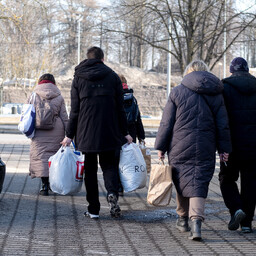Last year, EU countries agreed on a new migration package. Plans are underway to redistribute up to 30,000 refugees across the next two years. These individuals have come to the EU from the Middle East or North Africa. They are awaiting the processing of their asylum applications in Southern European countries such as Italy, Greece, Spain, Cyprus, or Malta.
Janek Mägi, head of the Border Guard and Migration Department at the Ministry of the Interior, explained to ERR that Estonia has three options. These are: to accept 79 refugees, send officials to Southern Europe to help, or pay a one-time solidarity contribution of 1.7 million euros. These options can also be combined.
Other member states face similar choices. For example, Lithuania must accept 158 refugees or pay three million euros. For each refugee, the European Commission provides 10,000 euros. This helps cover the costs of hosting people. Estonia would receive around 800,000 euros for accepting 79 people.
If Estonia does not wish to accept refugees, it is possible to send experts to Southern Europe. They would help reduce the burden of processing refugees. These experts could be, for example, border guards or reception center staff.
If Estonia does not wish to accept refugees or send experts, the third option is to pay 1.7 million euros to Southern European countries.
The European Commission plans to relocate up to 30,000 refugees the following year. This means that next year, Estonia will also have to decide whether to accept 79 people into the country or pay 1.7 million euros.
The Ministry of the Interior prefers to send experts and pay money. According to Janek Mägi, the government should make a decision by the end of the year, in November or December. If refugees are to be accepted, the decision must also be approved by the Riigikogu.
Mägi said that experts would gain valuable experience from Southern Europe that is difficult to obtain in Estonia. The European Commission will make a more detailed proposal to Estonia and other countries on October 15.
The first refugees could come to Estonia in the second half of next year. However, it is more likely that they will arrive the following year.
According to EU data, 64,000 asylum applications were registered in May. This is less than in 2024. The most applications for asylum came from citizens of Syria, Afghanistan, Venezuela, Turkey, and Colombia.

